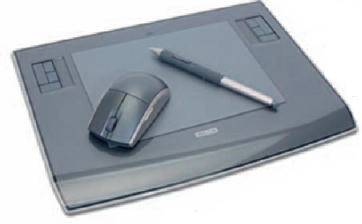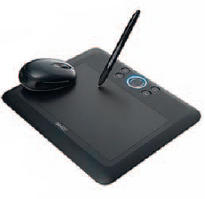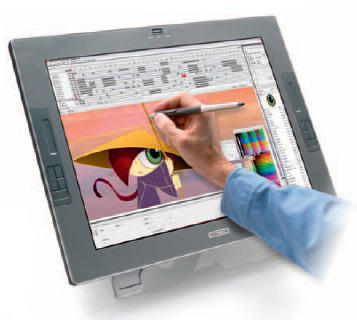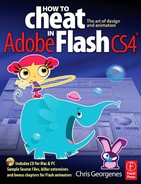Graphics Tablets
THERE ARE SOME THINGS I JUST CAN’T WORK WITHOUT, and one of them is my Wacom tablets. They are indespensible when it comes to my workflow and actually save valuable production time on a daily basis.
My first experience with a Graphics tablet of any kind was during my employment at a small production company creating animated television shows. Early on we had very small budgets and therefore relatively cheap equipment to work with. We used Summasketch Graphics tablets (Summagraphics) and even though they got the job done, they were pretty clumsy to work with. The main reason was the lack of wireless technology – the stylus was not cordless. It constantly got in the way of my arm as I moved across the tablet’s surface and would get pretty twisted and tangled. If you weren’t careful you could easily get the cord on the wrong side of a full cup of coffee and with one artistic stroke of the stylus, end up with a huge mess. The learning curve was not so bad, however. It took me about three full days to get used to not looking where I was actually drawing. There’s a slightly uncomfortable feeling of not looking at the actual surface where your pen meets the paper. Once I got used to looking at the computer display and not my own drawing hand, the next learning hurdle was the relationship of the tablet angle and the display angle. If my tablet was rotated as little as an inch or less, any vertical or horizontal lines became exponentially difficult to draw. Alignment between the tablet and monitor became important and soon I had a specific setup that worked for me, which was having the tablet to the right side of the computer and at a slight angle towards me. Some of the other animators had their tablet directly in front of them, center to their body. Of course left-handed people had their tablets to the left of the computer or centered. There was one particular illustrator who, being left-handed, used his tablet with his left hand and trained his right hand to use the mouse. Truly an ambidextrous advantage.

Eventually, as the company became more successful, the budgets grew. Better equipment was being purchased and soon we graduated to Wacom tablets. My appreciation for the quality of Wacom tablets is directly related to having used tablets of lesser quality. The look and feel of the Wacom tablet was truly awesome. Not only is the stylus cordless, but it requires no battery either. The tablet surface is super-smooth and a joy to work on. Some people find it to be too smooth and one nice trick is to tape a regular piece of copy paper to the tablet. The stylus will work fine and the extra friction lends to a more realistic drawing feel.
Wacom has recently introduced a new budget-friendly line of Graphics tablets called “Bamboo”. There are two different kinds: the Bamboo and the Bamboo Fun. The Bamboo is 7.8 × 7.3” in size while the Bamboo Fun offers two different sizes: 8.4 × 7.3” or 11.0 × 9.3”. Both share similar technical specs but when compared to the Intuos 3 line, they offer about half the features. But if you are on a budget, or you are more of a casual user, the Bamboo is very capable.

I have used tablets in various sizes: 4 × 6, 6 × 8, 9 × 12 and 12 × 12. My personal preference is the 6 × 8 and the 9 × 12 sizes. As Goldilocks found out while visiting the home of the three bears, these sizes are “just right”. I don’t have to physically move my hand and arm as much as I do with the 12 × 12 version and the 4 × 6 is simply too small for any serious graphics work. My 17” laptop display is in perfect harmony with the 6 × 8” tablet and they both fit perfectly in my laptop bag.
Then there’s the ultimate in Graphics tablet technology and what I consider the best piece of hardware around, the Wacom Cintiq 21UX. I can honestly say I fell in love within the first 5 seconds of using it. With the Cintiq you work directly on the screen, allowing you to take advantage of your natural hand-eye coordination since you are looking directly where you are working. There is little or no learning curve because of this natural “pen-on-paper” approach. The Cintiq works with any Graphics application and is especially useful with Flash and Photoshop. It feels as close to natural as any paperless production process could.

